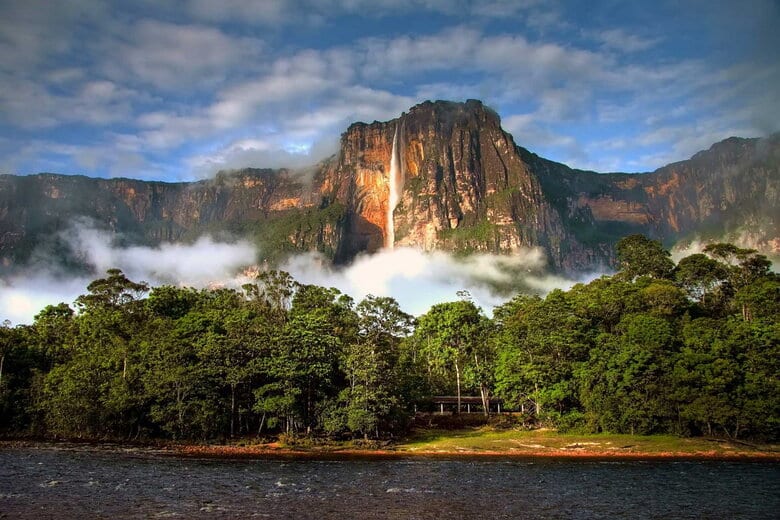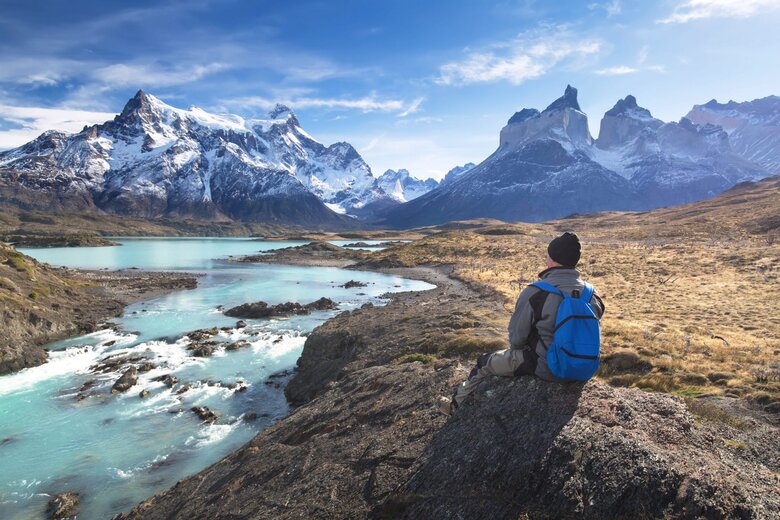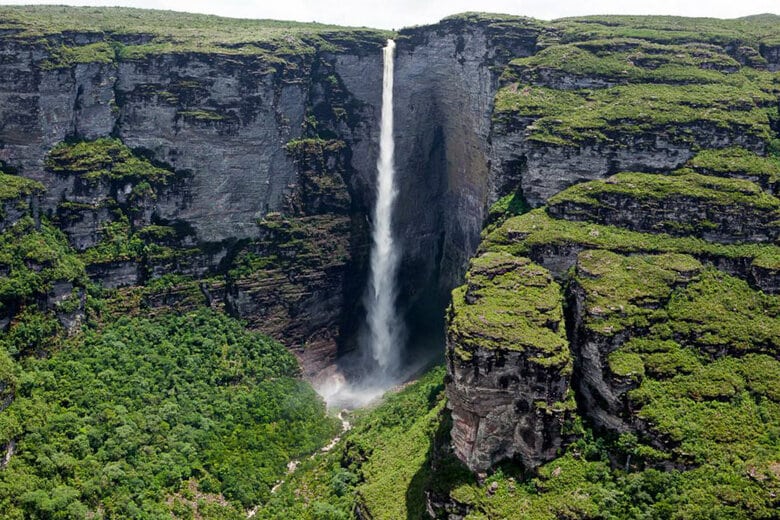
Travel information about Canaima National Park, Venezuela
Canaima National Park, located in southeastern Venezuela, is a UNESCO World Heritage site known for its breathtaking landscapes, including towering waterfalls, stunning rivers, and unique geological formations. Here’s what you need to know before planning a trip to Canaima National Park.
When to Go:
The best time to visit Canaima National Park is from December to April when the weather is dry, and the waterfalls are at their fullest. During the rainy season from May to November, many trails and roads can become impassable due to flooding, so it’s best to plan your visit accordingly.
Getting There:
The nearest town to Canaima National Park is Puerto Ordaz, which has an airport with connections to other cities in Venezuela. From there, you can take a domestic flight or drive to Ciudad Bolivar, where you can catch a small plane to the park. Once inside the park, you can travel by boat or foot to explore the various attractions.
What to Expect:
Canaima National Park is home to the world-famous Angel Falls, the tallest waterfall in the world. The park also features other impressive waterfalls, such as Sapo, Sapito, and Hacha, which you can visit by boat or on foot. Visitors can also explore the park’s unique geological formations, such as the tabletop mountains known as tepuis, which inspired Sir Arthur Conan Doyle’s novel “The Lost World.”
Aside from the natural attractions, visitors can also learn about the indigenous Pemon culture, who have lived in the area for thousands of years. You can visit a Pemon village and learn about their way of life, including their traditional arts and crafts.
Tips for Travelers:
Bring plenty of cash, as there are no ATMs or credit card facilities in the park.
Wear comfortable, waterproof shoes and bring a rain jacket, as rain showers are common.
Plan your itinerary in advance and book a tour with a reputable tour operator to ensure a safe and enjoyable trip.
Respect the local culture and avoid littering or disturbing the wildlife.
Be prepared for limited amenities, such as electricity and running water, as many lodges and campsites in the park are rustic.
In conclusion, Canaima National Park is a natural wonderland that offers a unique opportunity to explore one of the world’s most stunning landscapes. With its towering waterfalls, unique geological formations, and rich cultural heritage, it’s a trip you’ll never forget. Just be sure to plan ahead and follow the tips for travelers to ensure a safe and memorable journey.

Travel information about Torres del Paine National Park, Chile
Torres del Paine National Park is a protected area located in the southern part of Chilean Patagonia, and it’s considered one of the most stunning national parks in South America. Here’s what you need to know before planning a trip to Torres del Paine National Park.
When to Go:
The best time to visit Torres del Paine National Park is from November to March when the weather is milder, and the days are longer. However, keep in mind that the park is open year-round, and each season offers unique experiences.
Getting There:
The nearest airport to Torres del Paine National Park is Punta Arenas, and from there, you can rent a car or take a bus to the park. You can also fly to Puerto Natales, which is the closest town to the park. Once you arrive, there are various hiking trails and roads to explore the park, but keep in mind that some roads may be closed during the winter months due to snow and ice.
What to Expect:
Torres del Paine National Park is known for its stunning landscapes, including snow-capped peaks, turquoise lakes, and glaciers. The park is also home to various wildlife species, such as guanacos, pumas, and Andean condors, making it a popular destination for wildlife enthusiasts.
Visitors can explore the park’s various hiking trails, including the famous W trek, which takes about four to five days to complete. The trek takes you through stunning valleys, forests, and mountains, and it’s considered one of the most rewarding treks in South America. There are also shorter hikes, such as the Mirador Las Torres hike, which offers stunning views of the park’s famous granite towers.
Aside from hiking, visitors can also go horseback riding, kayaking, or fishing. The park also offers various accommodation options, from camping sites to luxury lodges, making it accessible to all types of travelers.
Tips for Travelers:
Bring warm clothing and waterproof gear, as the weather can be unpredictable, especially during the winter months.
Book accommodation in advance, as the park can get crowded during peak season.
Respect the environment and wildlife by avoiding littering or disturbing the animals.
Follow park regulations and stay on designated trails to avoid damaging the fragile ecosystem.
Be prepared for limited amenities, as many lodges and campsites in the park are rustic.
In conclusion, Torres del Paine National Park is a stunning destination that offers a unique opportunity to explore some of the most beautiful landscapes in South America. Whether you’re a hiker, a wildlife enthusiast, or simply looking to relax in nature, this park has something for everyone. Just be sure to plan ahead and follow the tips for travelers to ensure a safe and enjoyable journey.

Travel information about Chapada Diamantina National Park, Brazil
Chapada Diamantina National Park is a vast protected area located in the state of Bahia, Brazil, known for its stunning natural landscapes, including waterfalls, mountains, and caves. Here’s what you need to know before planning a trip to Chapada Diamantina National Park.
When to Go:
The best time to visit Chapada Diamantina National Park is from May to September, during the dry season when the weather is milder and the waterfalls are at their best. Keep in mind that the park is open year-round, and each season offers unique experiences.
Getting There:
The closest airport to Chapada Diamantina National Park is the airport of Lençóis, which is located about 20km from the park’s entrance. From there, you can rent a car or take a bus to the park. You can also take a bus from Salvador, the capital of Bahia, which takes about six hours.
What to Expect:
Chapada Diamantina National Park is known for its stunning natural landscapes, including mountains, valleys, waterfalls, and caves. The park has various hiking trails that take you through these stunning landscapes, such as the Vale do Pati trek, which is considered one of the best hiking trails in Brazil.
The park is also home to various wildlife species, such as jaguars, maned wolves, and armadillos, making it a popular destination for wildlife enthusiasts. Visitors can also explore the park’s caves, such as the Gruta da Lapa Doce, which has stunning rock formations and underground rivers.
Aside from hiking and exploring, visitors can also go swimming in the park’s various waterfalls, such as the Poço Azul, a crystal-clear swimming hole, or the Cachoeira da Fumaça, a stunning waterfall that drops over 380 meters.
The park has various accommodation options, from camping sites to guesthouses, making it accessible to all types of travelers.
Tips for Travelers:
Bring comfortable hiking shoes and warm clothing, as the weather can be chilly, especially at night.
Pack insect repellent, sunscreen, and a hat, as the park is known for its mosquitoes and strong sun.
Respect the environment and wildlife by avoiding littering or disturbing the animals.
Follow park regulations and stay on designated trails to avoid damaging the fragile ecosystem.
Be prepared for limited amenities, as many lodges and campsites in the park are rustic.
In conclusion, Chapada Diamantina National Park is a stunning destination that offers a unique opportunity to explore some of Brazil’s most beautiful natural landscapes. Whether you’re a hiker, a wildlife enthusiast, or simply looking to relax in nature, this park has something for everyone. Just be sure to plan ahead and follow the tips for travelers to ensure a safe and enjoyable journey.
Read the First Part of the Article and here the Third Part of the Article. Thinking in another travel?. You too can read information about Macedonia in this article. Hope you enjoy our articles and come back soon.


